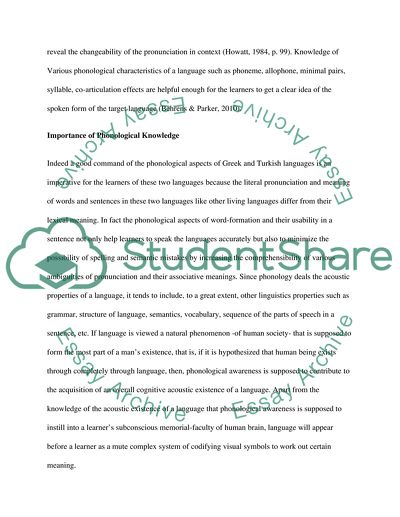Cite this document
(The Phonological Knowledge of the Turkish Language: the Pronunciation Research Paper, n.d.)
The Phonological Knowledge of the Turkish Language: the Pronunciation Research Paper. Retrieved from https://studentshare.org/education/1747219-phonology-in-the-foreign-language-classroom-provide-your-own-examples-from-your-teaching-and-from-your-learners-greekturkish-i-ll-help-you-with-the-examples
The Phonological Knowledge of the Turkish Language: the Pronunciation Research Paper. Retrieved from https://studentshare.org/education/1747219-phonology-in-the-foreign-language-classroom-provide-your-own-examples-from-your-teaching-and-from-your-learners-greekturkish-i-ll-help-you-with-the-examples
(The Phonological Knowledge of the Turkish Language: The Pronunciation Research Paper)
The Phonological Knowledge of the Turkish Language: The Pronunciation Research Paper. https://studentshare.org/education/1747219-phonology-in-the-foreign-language-classroom-provide-your-own-examples-from-your-teaching-and-from-your-learners-greekturkish-i-ll-help-you-with-the-examples.
The Phonological Knowledge of the Turkish Language: The Pronunciation Research Paper. https://studentshare.org/education/1747219-phonology-in-the-foreign-language-classroom-provide-your-own-examples-from-your-teaching-and-from-your-learners-greekturkish-i-ll-help-you-with-the-examples.
“The Phonological Knowledge of the Turkish Language: The Pronunciation Research Paper”, n.d. https://studentshare.org/education/1747219-phonology-in-the-foreign-language-classroom-provide-your-own-examples-from-your-teaching-and-from-your-learners-greekturkish-i-ll-help-you-with-the-examples.


